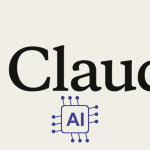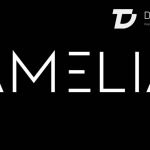India is poised to become a major player in the global Web3 environment thanks to its quick uptake of new technologies, expanding startup ecosystem, and a big pool of highly qualified digital workers.
Web3 Introduction
The World Wide Web’s dependable, resilient infrastructure was made possible by centralization, which also assisted in bringing billions of people online. At the same time, a small group of centralized organizations control a sizable portion of the World Wide Web and make unilateral decisions over what should and shouldn’t be permitted.
The solution to this problem is Web3. The Web3, which supports decentralization and is being produced, operated, and owned by its users, is not a Web that is monopolized by big tech companies. Web3 gives people the ability to make decisions rather than companies. Let’s look at how we got here before we discuss Web3.

The early Web
The majority of people believe that the Web was created and has only been a part of modern life since that time. But the Web that most of us use today is very different from what was first intended. Breaking the brief history of the Web into two broad time periods—Web 1.0 and Web 2.0—will help you comprehend this better.
Read-Only Web 1.0 (1990-2004)
Tim Berners-Lee was hard at work creating the protocols for the World Wide Web in 1989 at CERN in Geneva. His notion? was to develop open, decentralized protocols that permitted the sharing of knowledge from any location on Earth.
From 1990 until 2004, Berners-invention, Lee’s now referred to as “Web 1.0,” underwent its initial development. Web 1.0, also known as the read-only web, was primarily made up of static websites that were controlled by businesses. There was almost no user involvement, and people hardly ever created content.
The Read-Write Web 2.0 (2004-now)
Social media platforms’ introduction in 2004 marked the start of the Web 2.0 era. The web developed into a read-write medium rather than a read-only one. Instead of offering users material, businesses started to offer platforms where users could exchange user-generated content and communicate with one another. As more individuals went online, a small number of leading businesses started to hold a disproportionate percentage of the traffic and value produced on the internet.
The business model based on advertising was also created by Web 2.0. Users may generate content, but they didn’t own it or get paid when it was made.
Read-Write-Own Web 3.0
Gavin Wood, a co-founder of Ethereum, came up with the concept of “Web 3.0” immediately after Ethereum launched in 2014. Gavin articulated a solution to a concern shared by many early cryptocurrency adopters: the Web demanded too much trust. In other words, the majority of the Web that people currently know and use depends on their faith in a select group of private firms to behave in the public’s best interests.
Web3: What is it?
The phrase “Web3” has come to represent the idea of a new, improved internet. In essence, Web3 uses blockchains, cryptocurrencies, and NFTs to return ownership and authority to the consumers. A tweet from 2020 summed it up best: Web2 is read-write, Web3 will be read-write-own, and Web1 was read-only.
Principles of Web3
Although it’s difficult to give a precise definition of what Web3 is, a few fundamental ideas serve as its guiding principles.
With Web3, ownership is divided among its creators and users rather than being controlled and owned by sizable portions of the internet.
Everyone has equal access to engage in Web3 and nobody is excluded because it is permissionless.
With native payments, Web3 does away with the antiquated infrastructure of banks and payment processors and uses bitcoin for online purchases and payments.
Web3 runs without the use of reliable third parties; instead, it makes use of incentives and economic principles.
Why is Web3 so crucial?
Although Web3’s key features aren’t isolated and don’t fall neatly into any particular categories, we’ve attempted to categorize them for clarity’s sake.
Ownership
In a previously unheard-of method, Web3 offers you control of your digital assets. Let’s take the scenario of playing a web2 game. An in-game item that you buy is linked to your account immediately. You will lose these things if the game’s developers terminate your account. Or you lose the value of the in-game stuff you purchased if you stop playing the game.
Direct ownership is possible with Web3 thanks to non-fungible tokens (NFTs). Nobody, not even the designers of the game, has the authority to revoke your ownership. Additionally, you can sell or trade your in-game possessions on open markets to recuperate their worth if you decide to stop playing.
Censorship resistance
There is a severe imbalance in the power between platforms and content producers.
A user-generated pornographic content website called OnlyFans has over a million content producers, many of whom rely primarily on the platform for their revenue. OnlyFans made intentions to prohibit sexually explicit content public in August 2021. The statement infuriated platform creators, who felt they were being cheated out of money on a platform they helped build. After the uproar, the choice was swiftly changed. Even though the creators prevailed in this conflict, it brought to light a challenge for Web 2.0 producers: if you quit a platform, you lose the reputation and following you have built up.
Your data is stored on the blockchain in Web3. You can take your reputation with you when you decide to leave a platform and plug it into a different interface that more closely reflects your ideals.
Censorship resistance is a built-in component of a Web3 platform, whereas Web 2.0 demands that content creators put their trust in platforms to keep the rules the same.
Decentralized autonomous organizations (DAOs)
In addition to owning your data in Web3, you can also use tokens that function like the stock to collectively own the platform. DAOs enable decentralized platform ownership coordination and future platform decision-making.
Technically speaking, DAOs are predetermined smart contracts that automate decentralized decision-making over a resource pool (tokens). Users who possess tokens can vote on how resources are allocated, and the code executes the results of the vote automatically.
However, a lot of Web3 communities are referred to be DAOs. Different levels of decentralization and coding-based automation exist in each of these groups. We’re investigating what DAOs are right now and how they might change in the future.
Identity
In the past, you would register for an account on each platform you used. You might, for instance, maintain accounts on Reddit, YouTube, and Twitter. Want to modify your profile photo or display name? It must be done for each account. In some circumstances, social sign-ins are an option, although censoring is a well-known issue that arises. These sites have the ability to shut you out of your entire online existence with just one click. Even worse, in order to make an account on numerous platforms, you must trust them with your personally identifying information.
These issues are resolved by Web3 by enabling you to manage your online identity using an ENS profile and an Ethereum address. A single, secure, censorship-resistant, and anonymous login across platforms is offered by using an Ethereum address.
The India Web3 Startup Landscape: An Emerging Technology Leadership Frontier, there have been over 450 Web3 startups in India as of the first half of the year, and more than $1.3 billion has been invested in Web3 since 2020. Peer-to-peer connections and decentralized infrastructure are used by Web3 to deliver use cases that were often centrally regulated and opaquely executed by Web2.
“Thirty percent of these firms were founded in the previous year alone, and many of them use a B2B business model. Many of them are also engaged in work in fields unrelated to cryptocurrencies, such as entertainment and Defi (decentralized finance).
India’s economic, demographic, and technology adoption considerations place it well to become a high-growth Web3 market, even though the response to Web3 globally is still in its early stages. Since 2015, web3 startups in India have increased by around six times.
According to the report, the tier II ecosystem was expanding quickly across diverse Web3 apps, even though 82% of these firms were in tier I locations.
Instead of focusing solely on cryptocurrencies, Indian Web3 entrepreneurs are developing a wide range of Web2 solutions for important application domains like infrastructure, entertainment, decentralized communities, and finance.
The majority of people only understand and link Web3 with cryptocurrencies, and this needs to be changed. To create a mindset shift, it’s crucial to apply the technology to other use cases It was crucial that the government and private businesses develop and promote low-risk use cases that will aid Web3 technologies in becoming more widely adopted in the near term.
Since 2015, web3 startups in India have increased by around six times.
In the beginning, “the focus should be more on the use cases than the technology,” stressing the significance of adopting a slightly risk-based regulatory strategy.
With technical ideas like the metaverse and NFTs gaining popularity, the term “Web3” (third generation of the world wide web) has become popular.
Investments in Indian Web3 and Web2.5 businesses have increased along with the trust and interest of international investors. As of the third quarter of 2021, new-age incubators had accumulated over USD 587 million in funding.
It is encouraging to see that industry and government players in India are approaching blockchain technology very pragmatically, with use cases being investigated in fields including education, banking, enterprise tech, health & safety, and land registry.
The Techade will focus on the technology making substantial advancements that lead to creative use cases and magnified beneficial influence at a grassroots level, even though we are only scratching the surface of upcoming technologies like Web3.
According to the survey, regulatory uncertainty had caused the majority of Indian Web3 businesses to relocate their headquarters outside of the nation; this issue needed to be resolved in order to strengthen the local ecosystem.
According to research, India has the third-largest Web3 talent pool worldwide, accounting for about 11% of the world’s Web3 talent.
The future is decentralized
Web3’s environment is still developing. Although Gavin Wood first used the word in 2014, several of these concepts have only lately come to pass. The interest in cryptocurrencies, advancements in layer 2 scaling solutions, extensive trials of novel forms of governance, and revolutions in digital identification have all seen significant increases in the past year alone.
Web3 is just the beginning of our efforts to build a better Web, but as long as we keep enhancing the foundation that will sustain it, the Web’s future is promising.






